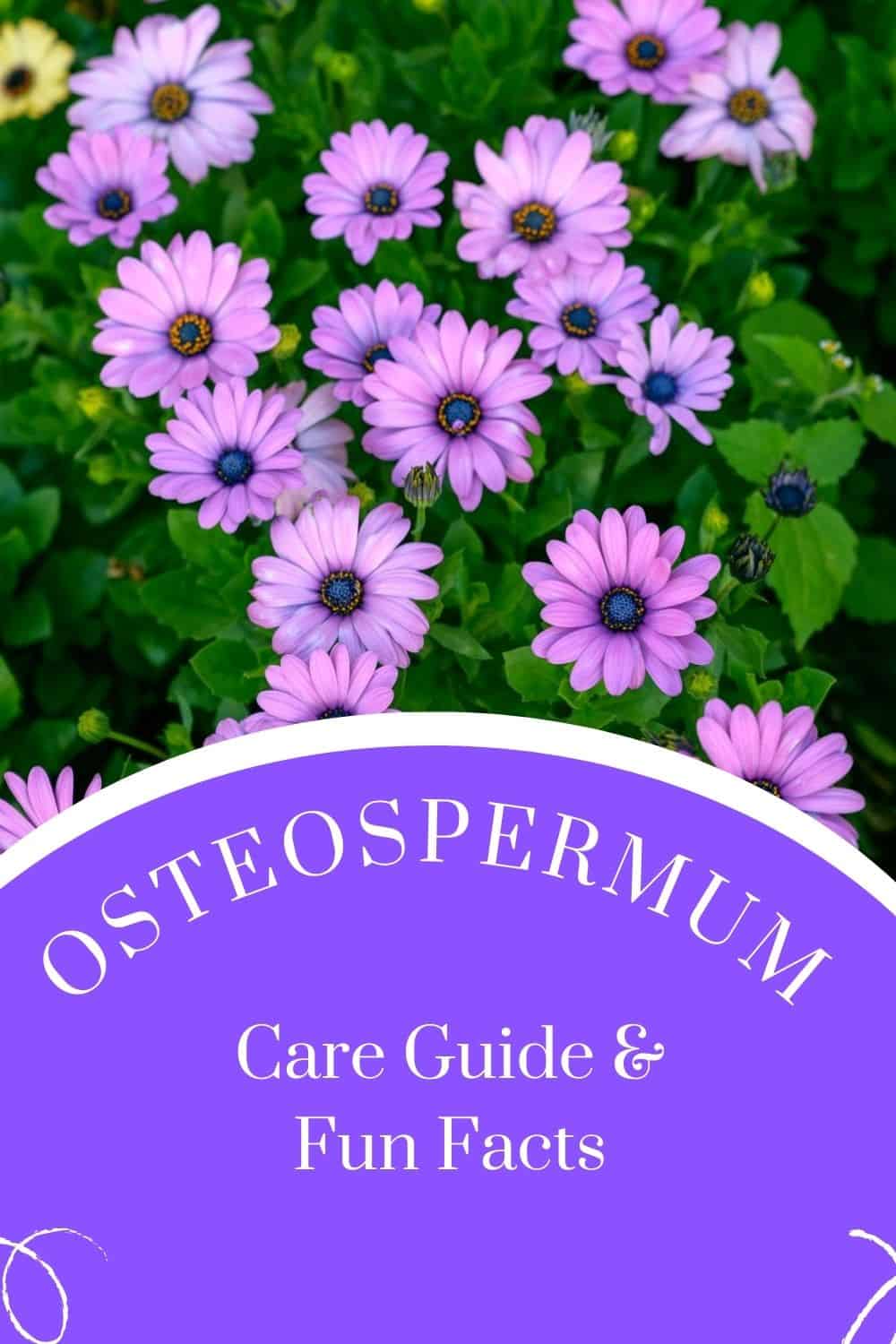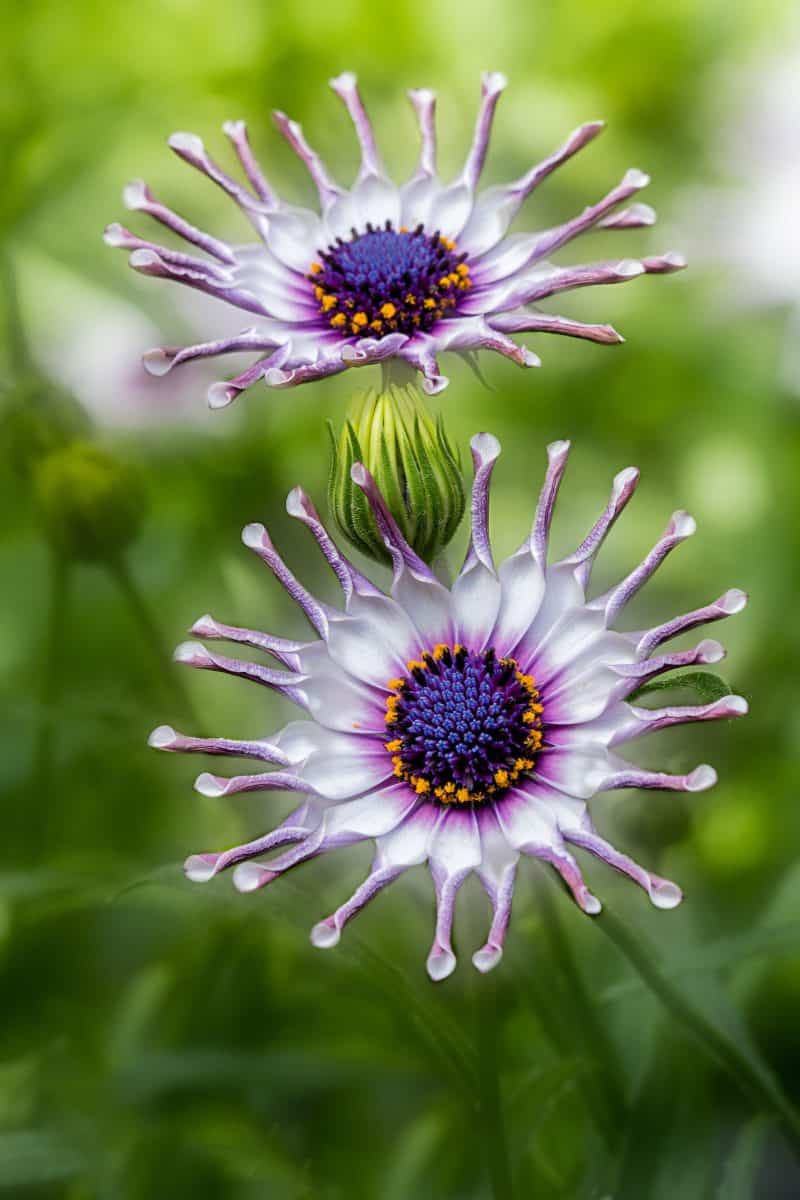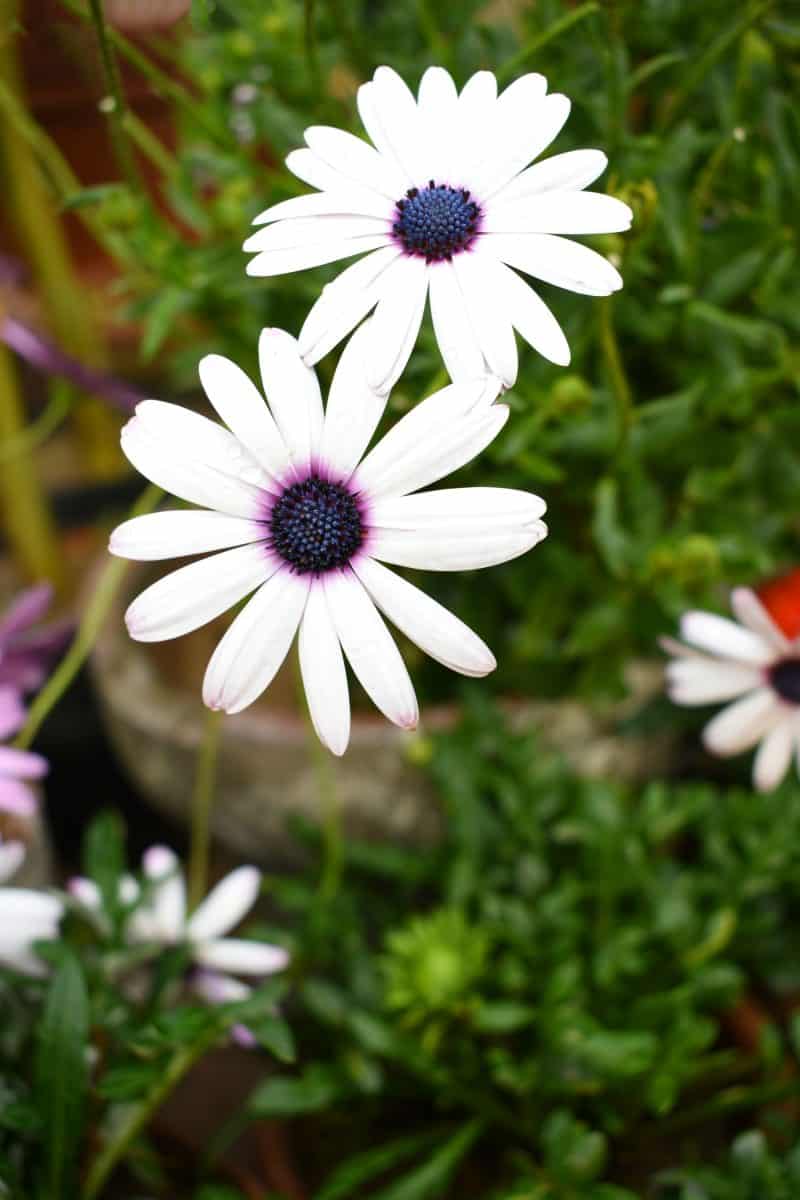Osteospermum, a dazzling member of the Asteraceae family, shares its lineage with sunflowers, daisies, and chrysanthemums. This short guide will tell you some amazing facts about this flower as well as provide you with quick care tips.

This plant is native to South Africa, where it has mastered the art of water conservation, sporting thick, slightly succulent leaves that retain moisture amidst arid conditions.
The visual allure of osteospermum is undeniable. Its flowers bloom in a mesmerizing palette of colors—white, yellow, pink, purple, and striking bicolored varieties, each centered with a distinctive blue or purple eye, affectionately earning it the nickname "blue-eyed daisy."

Dancing with the Sun: Nyctinasty in Osteospermum
Not just a treat for the eyes, these flowers engage in a captivating dance with the sun, closing at night or under cloudy skies and reopening with the morning's warmth. This behavior, akin to sleeping and waking, adds a dynamic and almost sentient quality to the garden.

The behavior of flowers opening and closing in response to the sunlight is known as "nyctinasty." This phenomenon is observed in several plant species, where the flowers or leaves move in response to the daily light cycle.
In osteospermum, this behavior allows the flowers to close at night or during cloudy weather and reopen with the morning sun.
Nyctinasty is generally thought to protect the reproductive parts of the plant from cold temperatures and moisture during the night and potentially from predation.
Name and Nomenclature
Osteospermum is a fascinating genus of flowering plants, primarily known for its daisy-like appearance which contributes to its various common names. The name "Osteospermum" comes from the Greek words "osteon," meaning bone, and "spermum," meaning seed, referring to the hardiness of the plant's seeds. This characteristic is a nod to its robust nature, allowing it to thrive in diverse environments.
Common Names
One of the most popular names for Osteospermum is the African Daisy, which reflects its native origins in South Africa. The name captures the essence of its vibrant and colorful blooms that resemble traditional daisy flowers.
Another common name is the Cape Daisy, which specifically points to the Cape of Good Hope region of South Africa where many species of the genus are found.
Marguerite and Blue-eyed Daisy
The name Marguerite, although also used for Argyranthemum frutescens, is sometimes applied to Osteospermum. This usage highlights the daisy-like form of the flowers, which is a characteristic shared with the Marguerite Daisy.
The term Blue-eyed Daisy refers to certain cultivars of Osteospermum that feature a striking blue center, contrasting beautifully with their white, pink, purple, or yellow petals.

These names not only help gardeners and plant enthusiasts identify and connect with the plant but also emphasize the diverse and global appreciation of its beauty and resilience.
How to care for an Osteospermum
These beautiful flowers can be a great addition to your garden. Here's everything you need to know about growing African Daisies.
Location and Soil
Osteospermum thrives in full sun to light shade, which helps promote abundant flowering. The soil should be well-draining to prevent any issues with root diseases. Proper soil conditions are crucial for healthy growth and vibrant blooms.
Planting
Plant your osteospermum in the spring, once the risk of frost has passed, to avoid cold damage to new plants. Space the plants about 12-18 inches apart to ensure adequate air circulation and room for growth. If you are planting in containers, ensure they have drainage holes and use a potting mix designed for good drainage.
Watering and Feeding
It's important to water osteospermum deeply and regularly, especially during periods of dry weather. However, take care not to overwater, as this can lead to root rot. Feeding the plants with a balanced, slow-release fertilizer in spring and again in midsummer will support vigorous growth and enhance flowering.
Care and Maintenance
Regular deadheading of spent blooms is essential to encourage continuous flowering throughout the season. In regions where osteospermum is grown as a perennial (USDA zones 7-11), pruning back the plants in late winter or early spring will help maintain a compact shape and encourage fresh growth.
Seasonal Bloom
Osteospermum typically enjoys a long blooming period from spring through fall, peaking in late spring and early summer. In milder climates, these plants may continue to flower throughout the winter months, providing color and vibrancy even in the cooler season.
Special Tips for Cold Climates
In colder areas (USDA zones 6 and below), osteospermum is best grown as an annual or in containers. This allows you to move the plants indoors over winter to protect them from freezing temperatures, ensuring their survival and bloom the following year.
